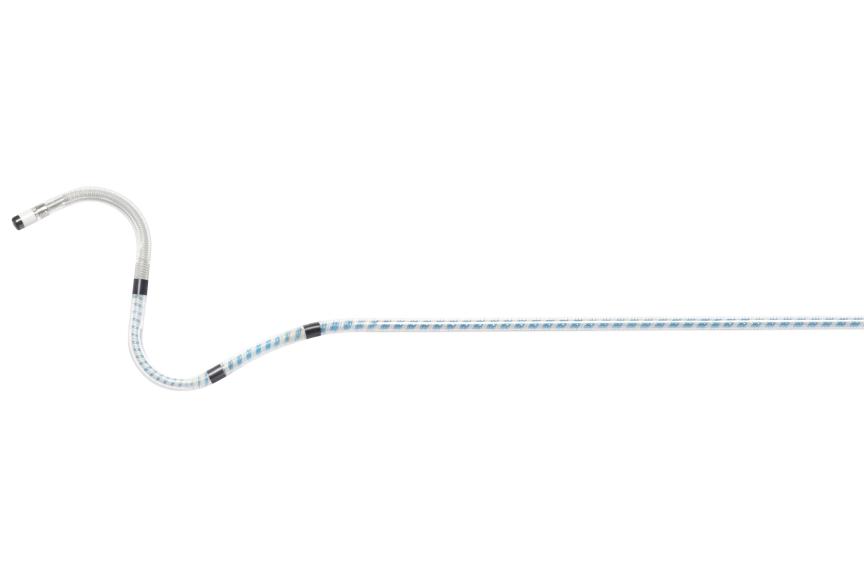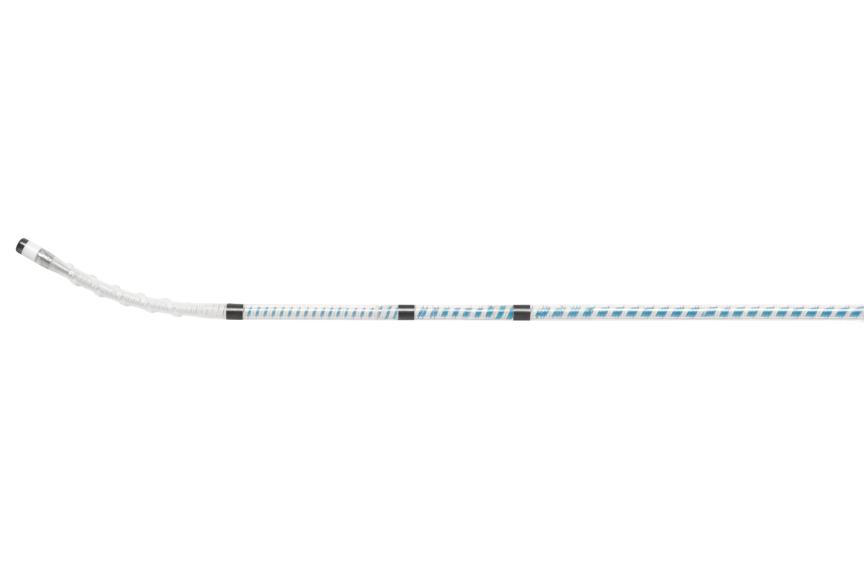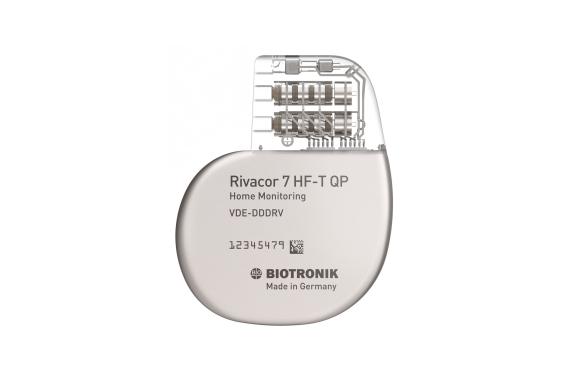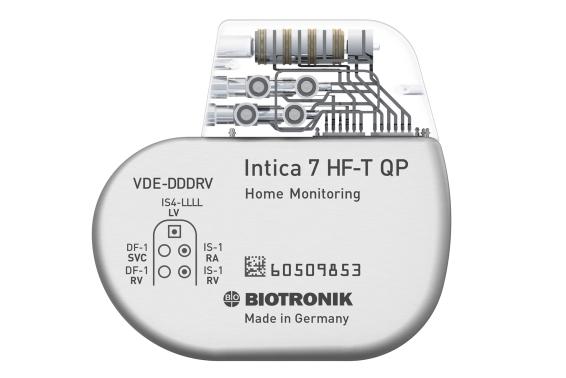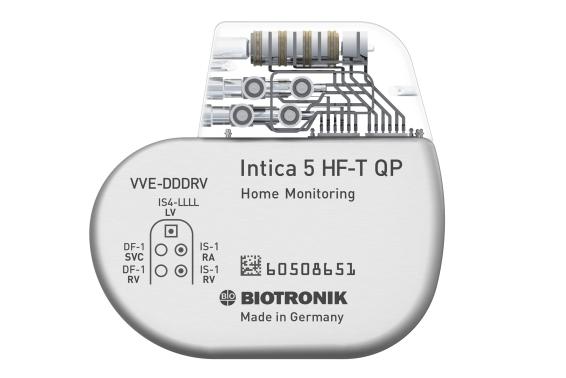Sentus OTW QP
Sentus OTW QP is a family of left-ventricular (LV) quadripolar (QP) leads designed to be easily placed with telescopic LV lead delivery systems, such as Selectra. With their four poles, Sentus OTW QP leads offer multiple electronic repositioning options thus enables selection of the optimal pacing site, management of phrenic nerve stimulation and facilitates excellent pacing thresholds to improve CRT. Furthermore, when combined with a compatible BIOTRONIK device the quadripolar lead also provides sequential or simultaneous multipole LV stimulation for more options to manage CRT.
BIOTRONIK offers not only different fixation mechanisms for thinner and larger veins, but also QP leads with different pole spacing for shorter and longer target veins. Choose the most suitable lead configuration for individual patient anatomies to ensure a reliable fixation and increase CRT response. With Sentus OTW QP leads, BIOTRONIK offers a comprehensive LV lead portfolio with ProMRI®, granting heart failure patients access to high resolution MRI scans.
Product Highlights
Multiple Electronic Repositioning
Multiple electronic repositioning options to select the optimal stimulation site, to manage phrenic nerve stimulation and to achieve excellent pacing threshold
MultiPole Pacing (MPP)
MultiPole Pacing (MPP)in newest generation of CRT-D devices
Pole Spacing for Short and Medium Vein Anatomies
Different pole spacing for short and medium vein anatomies to ensure the best positioning
Product Details
- ProMRI® allows patients to undergo MR scanning under specific conditions
- Quadripolar LV lead for optimal biventricular pacing thanks to multiple programming options
- Thin 4.8 F silicone lead body with polyurethane coating compatible with 5 F lead introducer
- ‘Thread’ fixation designed for small vessels OR “S-curve fixation” for medium to small vessels
- TwinFlex Technology with co-radial design for maximum flexibility
- True OTW and stylet functionality for versatile handling during implantation
- Fractal coating and steroid elution for low thresholds

